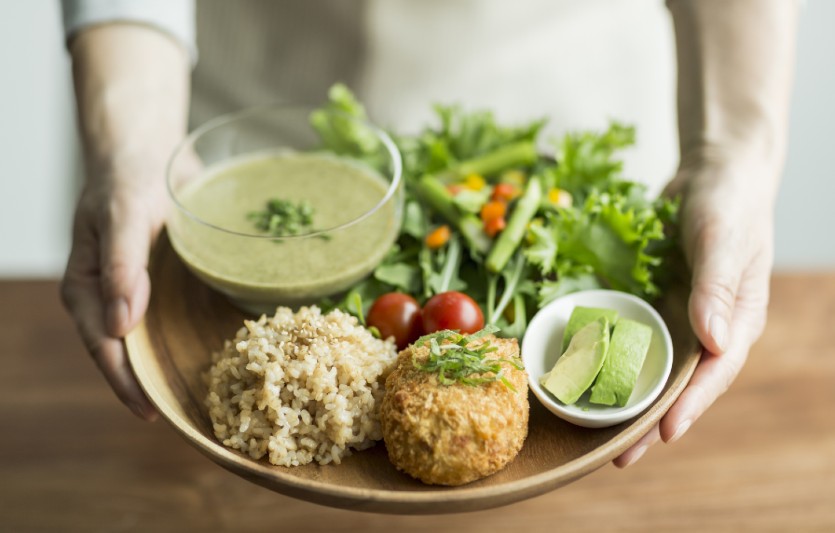Key Takeaways
The reality: New Year’s resolutions are hard to keep. We often set goals before we are truly ready or attempt major overhauls that are too difficult to maintain. If you are hoping to make a diet shift for 2021, consider making small changes throughout the year instead of attempting a January 1st makeover. Check out these twelve suggestions — one for each month — to make your diet a little healthier the whole year through.
January | Give Your Fruit a Freeze
Frozen fruit is convenient and economical, especially if you freeze your own by rescuing fruit on its last legs at home. Freezing grapes is a sweet snack strategy and frozen bananas, peaches, and berries help make smoothies thick and frosty. Here’s how to do it.
February | Show Your Heart Love with Healthy Fats
February is American Heart Month, so allow room for plant-based fats. Use hummus as a vegetable dip. Add avocado instead of mayo or cream cheese to sandwiches. Swap olive oil for butter when cooking.
March | Go Green for Calcium
If you are trying to boost calcium intake with ice cream, scoops of butter pecan are, sadly, not the best option. Dairy foods contain calcium, but certain green vegetables can be good sources too. 1 cup cooked bok choy has more calcium than a cup of ice cream. And choose kale over spinach, Popeye’s choice vegetable has compounds that reduce calcium absorption.
April | Snack on Nuts
Hungry? Opt for a small handful of nuts. They aid in fullness and might even reduce the likelihood of overeating. Eating nuts has also been associated with a lower risk of heart disease and premature death. But the benefits don’t generally increase the more handfuls you have — research supports roughly a handful a day can go a long way.
May | Replace Red Meat
No need to banish ribeyes forever, but try to limit red meat to no more than three times per week. This may help preserve brain function as you age. As does opting for legumes (like beans, lentils, and soy) instead. Research shows making this swap may also help you live longer. Red meat includes more than steak and burgers — it encompasses hot dogs, pork tenderloin, and ham too. Instead of trying to make meatloaf out of chickpeas (which may just make you sad), try this recipe and celebrate beans in their own right.
June | Trade in Ham for Tuna at Lunch
Studies show eating fish once or twice a week may lower risk of heart disease and stroke, especially if you substitute it in place of processed deli meats. Canned tuna is an accessible way to start. Better yet, use canned salmon instead, which has less mercury and more heart-protective omega-3 fats.
July | Add Red and Blue Berries for Your Brain
Protective plant compounds called anthocyanidins may help protect your brain as it ages. Research shows consuming berries, like strawberries and blueberries, might be particularly beneficial. Consider frozen berries, which are often cheaper, and add them to this baked oatmeal.
August | Substitute Seeds
Nut allergy? No problem. Seeds are tiny, but mighty. They contain protein and heart-healthy fats (chia, flax, and pumpkin seeds contain a plant version of omega-3 fats). Try sunflower seed butter as a peanut butter alternative — it has 3 times as much vitamin E, a nutrient that helps you fight pollution like smoke and ultraviolet light from the sun.
September | Start Your Day with Whole Grains
Research supports swapping in whole grains for refined grains to help lower cholesterol, improve blood sugar, and reduce inflammation in the body (a marker associated with chronic diseases). Bored at breakfast? Change things up by going savory with oatmeal or sweet with quinoa.
October | Eat Orange Plants for Protection
Beta carotene is a plant pigment that helps maintain your body’s natural defenses and works to keep organs, like your lungs and gut, healthy to fight infection. Orange-colored vegetables, like sweet potatoes, pumpkin, and carrots, have some of the highest levels, but the protective compound is found in apricots, mangos and cantaloupe too.
November | Practice Mindful Eating
Focusing on ‘how’ — not just ‘what’ — you eat can encourage meal satisfaction and may reduce excess snacking. Try eating at a table without distractions, like phones or computers. Flavor includes more than just taste, so pay attention to all your senses (this includes sight, sound, smell, and texture).
December | Give Peas a Chance
Peas are considered a starch and a vegetable. They have more than ten times as much fiber as white rice and as much protein as a cup of quinoa. Plus, they keep well frozen, so have some on hand to add to soups and grain-based dishes.

Emily Gelsomin, MLA, RD, LDN, is a senior clinical nutrition specialist at Massachusetts General Hospital. As a registered dietitian, she counsels on medical nutrition therapy on an outpatient basis and is co-director of Be Fit, the hospital’s employee wellness program.
Jointly sponsored by The Clubs at Charles River Park and MGH Nutrition and Food Services, the 10-week program focuses on helping participants “Be Fit and Eat Right.” Every ten weeks, employees from different departments within the hospital compete with each other as they make a commitment to Be Fit. Through the creation of a social environment at the workplace, participants are supported to make progress in personal lifestyle changes with the help of a unique support system that includes a dedicated nutritionist and personal trainer.
Be Fit strives to create a milieu of wellness that extends beyond the 10-week curriculum by offering features to those who are not part of the intensive program. This includes the creation of Choose Well, Eat Well, a rating system designed to help both employees and patients increase awareness of healthy choices at retail eateries within the hospital. They also publish a timely nutrition tip each month.




